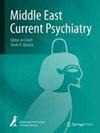Perception and experiences of suicide among university students in Egypt
IF 1.6
Q3 PSYCHIATRY
引用次数: 0
Abstract
Abstract Background The worldwide prevalence of suicide ideation, planning, attempt, and death is a major public health issue. The highest rates of suicide are seen in those aged 15 to 29, largely correlating to their time spent in higher education. Objectives Identify the perception and experiences of medical students towards suicidal thoughts and attempts and explore some predictors. Methods A cross-sectional study was conducted at Kafrelshiekh University in Egypt, included 554 university students using predesigned questionnaire that included sociodemographic characteristics, perception of students about suicide, and their experience with knowing a person who had suicide thoughts or attempts and if they themselves had suicidal thoughts or attempts. Results Self-experience with suicidal thoughts was reported by 25.3% while 12.3% reported attempting suicide, and among those who attempted suicide the most frequent reason was feeling depressed (61.8) followed by educational pressures (54.4%) and feeling lonely (41.2%). Accepting the concept of suicide was the main predictor for having suicidal thoughts (OR = 7.784) followed by knowing a person who had suicidal attempt (OR = 2.234) or thoughts (OR = 4.609). Conclusion Our results indicate the suicide ideation and behavior are prevalent among college undergraduates. Universities have the responsibility to educate students with effective life education as well as suicide prevention and intervention programs.埃及大学生对自杀的认知和经历
世界范围内自杀意念、计划、企图和死亡的流行是一个重大的公共卫生问题。自杀率最高的是15至29岁的人,这在很大程度上与他们接受高等教育的时间有关。目的确定医学生对自杀念头和企图的感知和经历,并探讨一些预测因素。方法在埃及kafrelsheikh大学进行了一项横断面研究,包括554名大学生,使用预先设计的问卷,包括社会人口学特征,学生对自杀的看法,他们认识有自杀想法或企图的人的经历,以及他们自己是否有自杀想法或企图。结果有自杀念头的学生占25.3%,企图自杀的学生占12.3%,企图自杀的学生中以情绪低落(61.8%)为主,其次是学业压力(54.4%)和孤独感(41.2%)。接受自杀的概念是有自杀想法的主要预测因子(OR = 7.784),其次是知道一个人有自杀企图(OR = 2.234)或有自杀想法(OR = 4.609)。结论自杀意念和行为在大学生中普遍存在。大学有责任对学生进行有效的生命教育以及自杀预防和干预计划。
本文章由计算机程序翻译,如有差异,请以英文原文为准。
求助全文
约1分钟内获得全文
求助全文
来源期刊

Middle East Current Psychiatry
Medicine-Psychiatry and Mental Health
CiteScore
3.00
自引率
0.00%
发文量
89
审稿时长
9 weeks
 求助内容:
求助内容: 应助结果提醒方式:
应助结果提醒方式:


